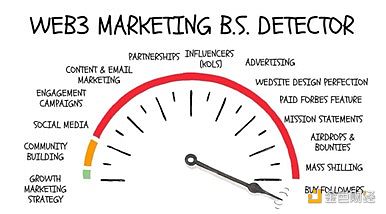Author: Jimmy Song, Bitcoin developer, Programming Bitcoin author; Translator: Jinse Finance xiaozou
The VC token industry is no longer what it was in 2017 or even 2021. At that time, newcomers to the "crypto" field still believed that VCs would give advice on what to buy and what not to buy. These crypto VCs made a lot of money, and almost everything they promoted was bought by the credulous public, driving prices up sharply. They made money through various tokens, from EOS to IOTA, WAX and STEEM. At that time, it was their golden age of market influence.

But the influence of crypto VCs has clearly waned over the past few years, and the days of 30x returns through ICOs are gone. Since then, their reputation has plummeted as the markets where they accumulated funds have moved further and further away from them. In a sense, though, they deserved it, as almost all of the tokens they pumped up have performed poorly, and the likelihood of these tokens' promises being fulfilled is like the Kardashian wedding vows. They performed amazingly, driven by a zero interest rate policy environment and crazy FOMO, but when the altcoin market began to go downhill, their future collapsed with it.
1The Death of VC Tokens
While VCs struggle, they benefit from the fact that the industry is lagging behind. They usually strike while the iron is hot for the next round of fundraising, raising a lot of money during the bull market. They can survive for a long time on 2% annual management fees, even though 20% profits are looking increasingly slim. Crypto funds have performed poorly in the past few years, and most of them are insolvent.
The few tokens they tried to push died almost before they could rise, BitClout and WorldCoin are two famous examples. VCs poured a lot of money into them, hoping to recreate the good old days, only to find that the market no longer trusted them. Who can blame the market? The tokens they pushed before fell sharply in US dollar terms, and in Bitcoin terms, they look like Venezuelan bolivars.
2The Rise of Meme Coins
But this doesn't mean that altcoins are gone. Memecoins replaced VC tokens and finally brought more integrity to the Nietzschean will to power game that had been going on. The original memecoin was of course Dogecoin, which Elon Musk lifted like a hot air balloon and the market, amazingly, followed. What Dogecoin did was expose the reality of the altcoin market. Narratives didn’t matter, it was all just a game of thrones, a Keynesian beauty contest and mob rule. In a sense, the altcoin market went back to its roots.
Dogecoin is also notable because it eschewed VCs. With a retail approach, VCs were largely left alone. How could they? These are the people who are supposedly able to predict the future and invest accordingly. There was no expertise, no due diligence, no market research required to get memecoins up. VCs had no special access or insight into the memecoin market, and they had nothing of value to offer. They were no longer middlemen.
After Doge came Shibu Inu, whose rapid success made VCs seem completely unnecessary. The game at that time did not require a large injection of funds, just the right amount of publicity and enough marketing to achieve escape velocity. Shibu's rise is purely a meme, and like Dogecoin, it also does not need venture capital to succeed. Therefore, venture capital is like cable news in the altcoin industry, and the only attention it can attract comes from its deceived peers.
3 New cycle
We are now in an environment where meme coins have become the pump and dump manipulation choice of altcoins. In fact, in this round of cycles, the tokens that have gone all the way higher are either meme coins or meme coin platforms.
Regardless of the value, meme coins seem to be similar to other altcoin dynamics, and it seems that only a few mainstream coins have occupied a significant share of mind, while everything else is dying fast. The difference is that since these meme coins do not have a large marketing budget, they will enter the sell-off phase more quickly.
Everything is still good. In a sense, altcoins are much more honest this time. There are no grand promises from crazy blockchain applications, and no disruption of certain industries. Those who buy and sell meme coins know that it is a gambling tool and they are playing a very stupid game. There is nothing remotely close to a scam with PEPE or WIF, and that is because they do not claim any utility or even a future.
Don't feel sorry for the VCs. They are reaping the fruits of the hype and fraud they sowed. Many companies have destroyed their reputations by promoting useless products, and now no one listens to them, which shows that the market is working properly.
Developer time is also greatly reduced. Altcoin platforms waste developer time on insecure projects that are almost useless and completely abandon practicality just for the "fun of gambling". The entire altcoin industry is a big casino, and now everyone knows it.
Finally, meme coins make Bitcoin look better and better.
 JinseFinance
JinseFinance



